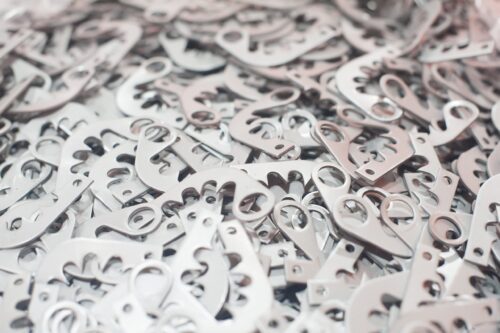When sourcing stamped components, most buyers focus on one thing: unit price. But the lowest quote often hides costs that show up later — in tooling, scrap, inspection, or secondary operations. The result? Programs that look good on paper but bleed margin over time.
At Integrity Manufacturing — now part of the Calisota Parts platform — we’ve seen it firsthand. With over 50 years of experience supporting aerospace, automotive, defense, electronics, and medical programs, we know that true value comes from looking deeper than the number on a quote sheet.
Here are the two biggest areas where buyers unknowingly overspend — and how to avoid it.
1. The Hidden Cost Drivers in Metal Stamping
Every stamped part carries costs that don’t always show up in the initial quote. The most important drivers include:
- Material utilization – Scrap is one of the largest hidden costs. A redesign that improves yield by even 5% can save tens of thousands of dollars in a medium-to-large program.
- Tooling strategy – Progressive dies cost more up front, but often reduce cycle time and lower long-term per-part costs. Compound dies may be cheaper initially, but can cost more over the life of the program.
- Tolerance levels – Specifying ±0.001″ when ±0.005″ will add die complexity, extend inspection time, and inflate costs unnecessarily.
- Secondary operations – Steps like deburring, passivating, or plating are sometimes avoidable. Smarter die design can eliminate them altogether.
💡 Buyer takeaway: Don’t stop at piece price. Ask your supplier how they’re balancing material yield, tooling approach, and cycle efficiency for your specific volumes.
2. Design for Manufacturability (DFM): The Silent ROI Multiplier
One of the fastest ways buyers overpay is by treating design as “finished” before involving their stamping partner. Drawings that look fine on CAD often introduce hidden costs in production.
A short DFM review can eliminate these risks:
- Radii and bends – Sharp corners require special tooling; slightly larger radii can be produced with standard dies.
- Hole placement – Holes too close to an edge risk distortion and scrap. Moving them fractions of an inch stabilizes production.
- Feature complexity – Each emboss, tab, or louver adds another die station. Simplify features to speed production and reduce tooling cost.
- Finish expectations – Calling for “no burrs” or “mirror finish” when not functionally required increases inspection and finishing costs.
- Part consolidation – Multiple parts can sometimes be redesigned into one progressive die, eliminating assembly steps.
- Tolerance stack-up – Overly tight tolerances across parts in an assembly compound costs. Coordinating tolerances avoids over-engineering.
💡 Buyer takeaway: Involve your stamping partner early. A 30-minute DFM session before tooling is cut can save weeks of lead time and tens of thousands in unnecessary cost.
Why This Matters
For buyers, the real job isn’t just purchasing parts — it’s managing total program success. That means balancing cost, performance, risk, and speed to market. The best stamping partners don’t just run presses — they help you make smarter design and sourcing decisions.
At Integrity Manufacturing and Calisota Parts, we’ve helped customers:
- Save six figures annually by improving material utilization
- Eliminate finishing operations through smarter die design
- Consolidate parts to reduce assembly labor and risk
- Meet Tier 1 and government contract requirements reliably for over 70 years
The Bottom Line
Most buyers overpay for stamped parts because they’re focused on the wrong number. The real cost comes from design decisions, tooling strategy, and manufacturability. Choosing a partner who addresses these issues early can transform stamping from a cost center into a competitive advantage.
👉 Ready to see how DFM and cost transparency can reduce your total stamping costs? Contact us today to start the conversation or request a quote.

